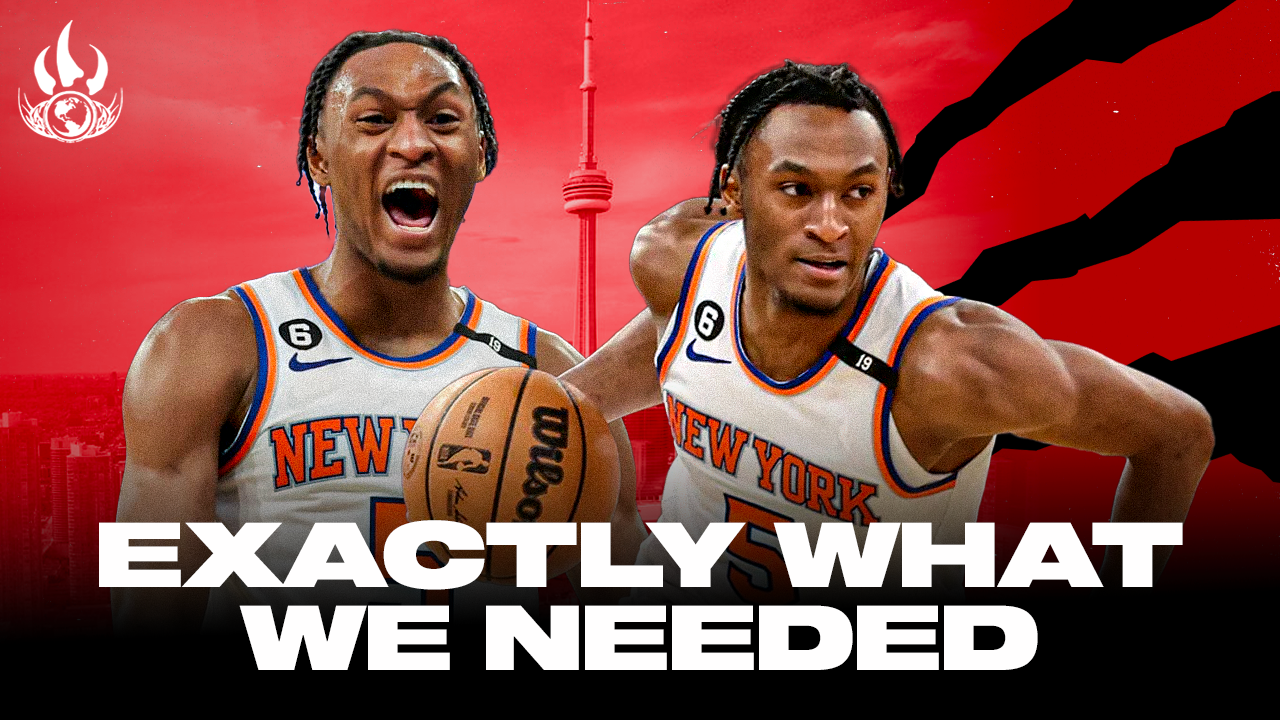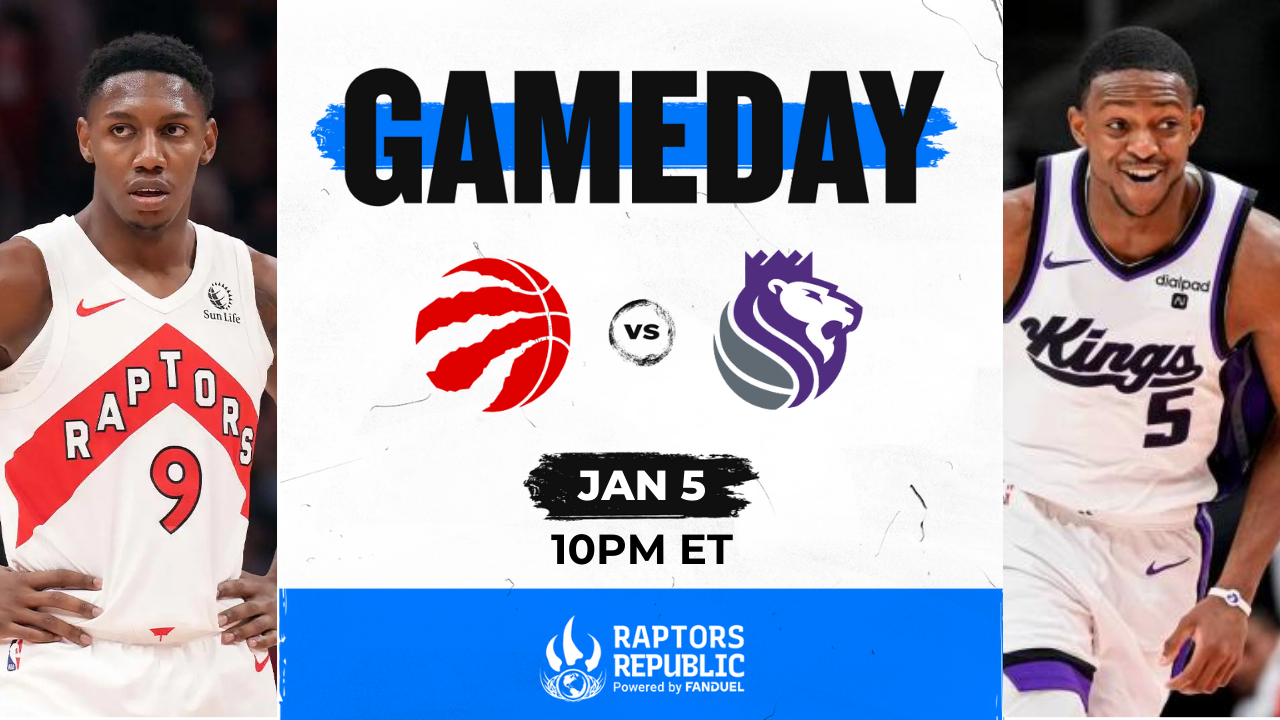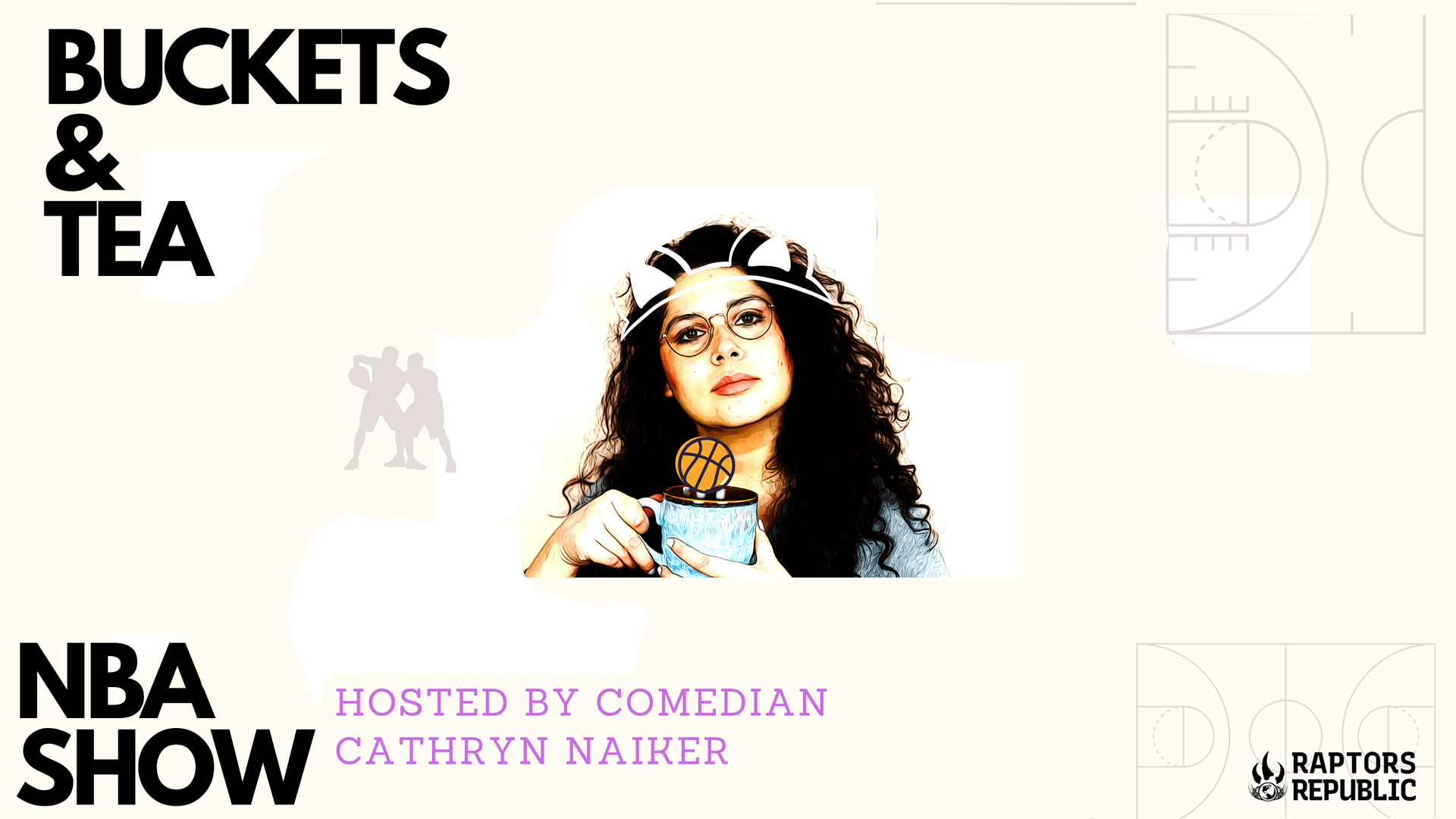The undefeated Toronto Raptors are a brand new team, exciting and successful both. Our expectations for Immanuel Quickley were spot-on, and those for RJ Barrett were a little sour; he’s outperformed expectations by a wide margin. It’s been two games, which is not a lot. But it’s been good.
You know what’s fun about small sample sizes? Everything. Realism is dumb, and sustainability is dumb (sometimes). Except … Toronto’s numbers through two games look suspiciously normal. This is a team at 2-0 that isn’t doing anything impossibly well. They’re just…better. They have the 14th-ranked offense and 14th-ranked defense in 2024 with a modest net rating of plus-5.0. (They are 17th in offense and 15th in defense over the whole season.)
Getting a little better at both sides of the ball goes a long way.
Toronto is up to 13th in both pick frequency and efficiency in the new year after ranking 17th and 25th prior. And while Quickley and Barrett have run plenty of pick and rolls, they actually have been less efficient than Toronto’s average since joining the team. Their off-ball shooting has helped space out the picks for others, and Dennis Schroder and especially Scottie Barnes have been the two most efficient initiators.
But focusing on those two is kind of missing the point with this new team. Toronto now has a variety of ball handlers capable of initiating at any point in a possession. It starts four in Quickley, Barrett, Barnes, and Pascal Siakam, and Schroder off the bench is more than capable, too. Having multiple weapons is important, and even if Barnes has been Toronto’s best over the course of the season, the team is most buoyed by everyone being a threat at any point in a possession. Toronto runs its offense through the elbows, with lots of cutting and a variety of actions (ideally), and having a variety of players able to cycle through those roles and cut, screen, handle, or score in multiple positions while on offense is really what’s been needed to make Rajakovic’s impressive-on-paper offense actually score on the court.
And the numbers support that; in the two games, Toronto has had a negative net rating with either of Schroder or Quickley off the court. Guard play is good! (Again, it’s been such a small sample that it doesn’t matter, but Toronto’s net rating with both together has been the best of any two-player pairing that has seen real minutes.) Guard play is necessary.
Of course, Quickley (over 50 percent) and Barrett (over 40 percent) are both on relative heaters from deep, and that certainly helps juice the numbers. But there is plenty of reason to believe Toronto’s shooting on the whole should yield more points going forward, not fewer. The Raptors are at 41.1 percent from deep in the new year, while connecting on just 35.0 percent on the season. Siakam, at 60.0 percent, is certainly on a heater from deep as well.
And yet the Raptors have only attempted 28.0 triples per game in the new year, down by a handful from the season average, and the fewest in the league over the same time period. On one hand, it makes sense they’re making them; that’s how scalability ought to work. And on the other hand, if Toronto does shift its shot spectrum a little bit more towards the 3-point line, and the accuracy drops, that could balance out as a wash.
Right now, Quickley is attempting only 6.5 triples per game in Toronto, which is just ahead of OG Anunoby’s 6.0 when he was here. And Quickley is a versatile shooter, able to sprint around screens and launch, pull up with the ball in his hands, step back behind the arc with the dribble, and do virtually everything in between. He has a trigger like lightning. He could theoretically get up to 10 or more triples per game without sacrificing quality on those looks. Quickley can shoot with his body twisting in one direction, his feet on the move, his hips facing away from the rim, and a defender falling into him. It’s not hard for such players to pump up their attempts, and the Raptors need to make sure as many possessions as possible end in a Quickley triple — even if he doesn’t shoot over 50 percent from deep for long.
His ability to drill triples out of handoffs gives Toronto an uppercut that it previously lacked in its halfcourt offense. He slots perfectly into a pet play (for most of the league) that involves a movement shooter setting a back screen in the lane before jetting into a dribble handoff. Quickley has great feel, freelancing cuts, redirecting them when he feels defenders overplaying, and finding improvisational space within the texture of his and others’ plays.
This just about a perfect end to an offensive possession, and Toronto can juice up its cutting and movement to get this shot quite frequently.
This is the stuff of movement-shooter heaven. This is the stuff for which you close your eyes, spin around three times, and whisper into the dark. Folk ritual stuff. On the year, Quickley is behind only a small handful of players for scoring juice on those shoot-triples-coming-out-of-handoff plays, and it’s exactly who you would expect: Keegan Murray, Klay Thompson, Steph Curry, Tyrese Maxey, etc. If Quickley bumps up his volume on those shots — which Toronto should demand of him — you could see him attempting 10 or more triples by himself in some games when defenses don’t adapt. And that’s the point; just running Quickley around a dribble handoff is an easy, easy way to force defenses out of position and to open space for everyone.
And to that point, Quickley is also a pull-up shooter — which Toronto just hasn’t had all season. On the year, the Raptors are attempting only 5.5 pull-up triples, the second-lowest average of any team. Even worse, Toronto is connecting on only 23.9 percent of such shots, by far the worst accuracy of any team. Defenders are able to play drop on the pick and roll, go under screens, switch with ease, and generally just keep all five defenders in the paint. Siakam and Barnes have been playing in a phone booth all year. Quickley will slowly start to free them, with his cutting and pull-up shooting both creating open driving and cutting lanes for teammates in his wake.
In the two games since the trade, Quickley has Toronto somewhat turned about there. The Raptors are still attempting 5.5 pull-up triples per game, but now they’re the fourth–most efficient team in the league there, shooting 45.5 percent. Sure, it’s small-sample size fun, but there’s no reason it can’t continue; no one else has been efficient beyond Quickley. (The second-most accurate pull-up 3-point shooter in Toronto’s two most recent games has been Gary Trent jr., at 31.4 percent.) It’s another area in which Quickley should ramp up his 3-point volume. At the very least, Toronto should be taking 7 or 8 such shots a game, rather than five.
Okay, so Quickley should take more 3s, and he should take them in more diverse ways. Got it.
Still, he hasn’t been perfect. On his drives, he’s not reaching the rim and stopping short far too often to attempt floaters or difficult scoops over multiple defenders. That matches what he did in New York, too, where his at-rim attempt frequency was near the bottom of the league. As a result, Quickley has shot 33.3 percent on 2-pointers — the worst of any Raptor. That will obviously bump up a little, but Quickley can’t be a star until he learns to take and make layups. He will have lots of space due to his shooting and floater abilities. He needs stronger last steps to keep on his lines. His passing has been better than it was in New York, but still on the lower end for a starting point guard. Because he hasn’t been getting deep into the paint, he hasn’t been creating a ton of high-volume interior passing. These two components will come hand-in-hand.
And despite Quickley’s passing not being super high-end yet, he has still unlocked Jakob Poeltl. Poeltl has been rejuvenated with a shooting guard back in town, locking down the defensive end by blocking everything in sight, and setting enormous and physical screens to free everyone on and off the ball. His positioning has been greatly improved. Quickley and Poeltl together have had a net rating of plus-8 (again, don’t worry about such things in small minutes), which just goes to show that some bigs might be best alongside certain types of guards. The Raptors might have one of those on board finally to help Poeltl. His handoff, off-ball screening, and on-ball screening chemistry with Quickley is already impressive. It will only get better. Quickley himself has said on the bench they’ve been asking each other “what do you like?” trying to figure out how best to angle things.
On the other hand, Barrett has been a phenomenal passer. He’s been averaging 4.0 assists per game, with ease Toronto’s fourth-best passer to this point behind Schroder, Barnes, and Siakam. He has been getting all the way to the rim on drives. He has been finding tight windows on interior passes. He has been cutting and keeping the chains moving, then transferring those advantages to other players with his passing. Great stuff, and very good complement to Quickley. The two have really done great work together and separately.
So how good is Toronto anyway?
Well, the Raptors won’t stay undefeated. We can count on that. And despite beating two very good teams in the injured Cavaliers and healthy Grizzlies, the Raptors gave up big leads in both games and looked discombobulated on the offensive end in crunch time. That stuff should sort itself out over time, as the team becomes accustomed to the sets, and players are no longer deferring because they’re new teammates. The defense has been better — but is missing an isolation defender who can stop an opponent’s best player. (Huh.) Barrett has been alright there, and Quickley has been a great team defender, but neither can replace Anunoby’s role. Siakam might have been able to three years ago, but these days he might not have the ability to stick with juicier guards for extended possessions. Barnes is best employed as a help defender, even if Darko Rajakovic employed him (without success) as the primary defender on Donovan Mitchell.
That probably won’t be fixed anytime soon. Toronto still lacks spacing outside of Quickley and Trent. (Gradey Dick would look great on this team if his shot fell!) Maybe Otto Porter jr. can step into a larger shooting and defending role, but don’t count on that anytime soon. Similarly, the Raptors need a backup big, especially if Rajakovic doesn’t want to play either Chris Boucher or Barnes extended minutes at the 5. Perhaps a shooting big? The rotation is strong but could be stronger.
The point is that the Raptors still have issues to fix. The defense has been solid, but it doesn’t have nearly the ceiling it had previously. This defense probably caps out as the 10th-best, if everything is working, but more likely it would land between 12th and 15th over larger samples. That’s better than what it was for the month of December! The offense is much, much improved, but it won’t be a top-five unit or anything close to that over long stretches until it addresses some of the more nuanced issues across the roster (more shooting, for example) and in individual players (deeper driving from Quickley, for example).
Those are all small fries. The Raptors are finally fun again. Expect them to rise up the standings now, especially as they want to convey their pick to the San Antonio Spurs this season. They aren’t going to be a bottom-six team, and if they were, the pick conveying for next year’s draft would be even worse for Toronto. So Toronto may as well win now. Whether or not they trade Siakam.
And the foundation of success is there now. The team makes sense. Barnes hasn’t played particularly well (by his standards) since the trade, as he’s been accommodating and shifting his game greatly to get everyone involved. He and Quickley will develop more and more chemistry over time and become better and better. Rajakovic has already started running plenty of the 1-4 pick and roll between Quickley and Barnes, and it should start to yield fruit soon. Roles make sense. Player types make sense. And even if the Raptors aren’t going to compete for a championship with this roster, at least the pathway to get there is now visible.



